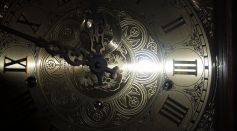Tags: Atomic Clock
Thorium Transition Through Laser Excitation of Nucleus Could Pave Way for Developing Nuclear Clock, Experts Suggest
Negative Leap Second Might Be Needed in the Future as the Earth Rotates Faster Than Ever

From Atomic to Nuclear Clocks: Harnessing the Potential of Scandium as a More Accurate Timekeeper
New Atomic Clock Is As Small as Postage Stamp but Not As Accurate as Its Predecessors

Scientists Say Atomic Clocks Near Sun May Help Find Dark Matter, New Physics

New Atomic Clock Innovation Record-Breaking on Timekeeping, Loses Only One Second Per 300 Billion Years

NASA's Deep Space Atomic Clock Study Completed; Navigation on Space Missions Will Get Better Soon
NASA Deep Space Atomic Clock Adds New Development, Improves Spacecraft Navigation and Trajectory
Optical Clocks Narrow Down the Search for Dark Matter
New Measurement Technology Paves Way For Nuclear Clocks
Popular Clock in New York City Now Reflects Our 'Remaining Time'
Researchers Have Just Developed the Sharpest Laser in the World
Scientists Set a New Record with Most Accurate Clock Ever Built
Most Popular

Starlink Satellite Explodes in Orbit; SpaceX Confirms It'll Re-Enter Earth

Aurora Phenomenon: How Geomagnetic Storms and Space Weather Are Lighting Up the World

Ocean Warming Explained: Why Climate Science Shows Sea Temperature Rise Is Speeding Up

How Wildfires Start, Spread, and Ignite: Understanding the Causes and Fire Behavior Clearly





